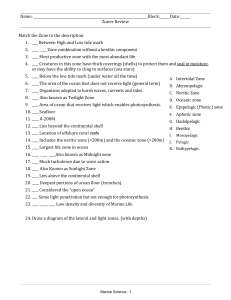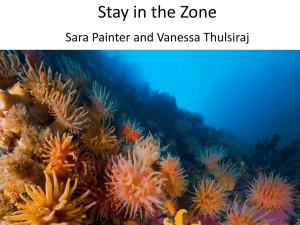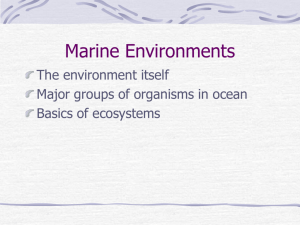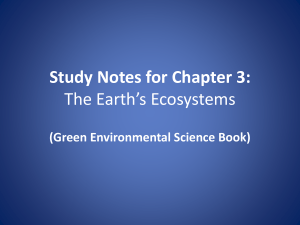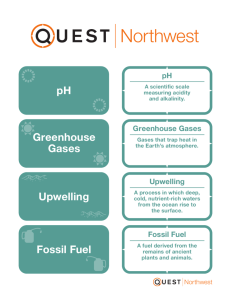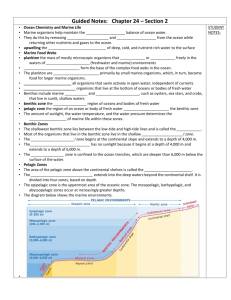Marine Lifestyles: Benthos, Nekton, Plankton
advertisement
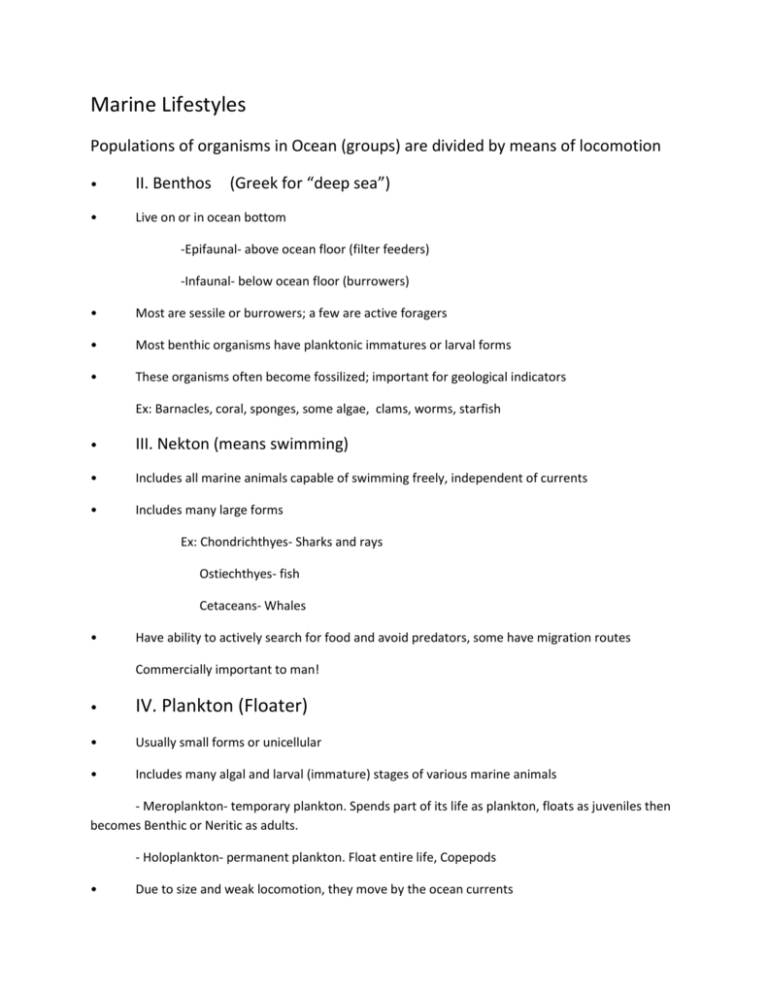
Marine Lifestyles Populations of organisms in Ocean (groups) are divided by means of locomotion • II. Benthos (Greek for “deep sea”) • Live on or in ocean bottom -Epifaunal- above ocean floor (filter feeders) -Infaunal- below ocean floor (burrowers) • Most are sessile or burrowers; a few are active foragers • Most benthic organisms have planktonic immatures or larval forms • These organisms often become fossilized; important for geological indicators Ex: Barnacles, coral, sponges, some algae, clams, worms, starfish • III. Nekton (means swimming) • Includes all marine animals capable of swimming freely, independent of currents • Includes many large forms Ex: Chondrichthyes- Sharks and rays Ostiechthyes- fish Cetaceans- Whales • Have ability to actively search for food and avoid predators, some have migration routes Commercially important to man! • IV. Plankton (Floater) • Usually small forms or unicellular • Includes many algal and larval (immature) stages of various marine animals - Meroplankton- temporary plankton. Spends part of its life as plankton, floats as juveniles then becomes Benthic or Neritic as adults. - Holoplankton- permanent plankton. Float entire life, Copepods • Due to size and weak locomotion, they move by the ocean currents • Larger plankters: Jellyfish and sargassum • V. Phytoplankton • Contain most of the “producers” (autotrophs) and start ecological basis for food chain in ocean. • Phytoplankton use chlorophyll to photosynthesize and produce food for themselves and produce free O2 as a biproduct “Grasses of the Sea” • VI. Zooplankton • Unicellular and multicellular heterotrophs. 1st order consumers in food chain. • Almost every group of marine animal is represented during earliest life stages. • Often called “grazers”; 2nd level in food chain.
